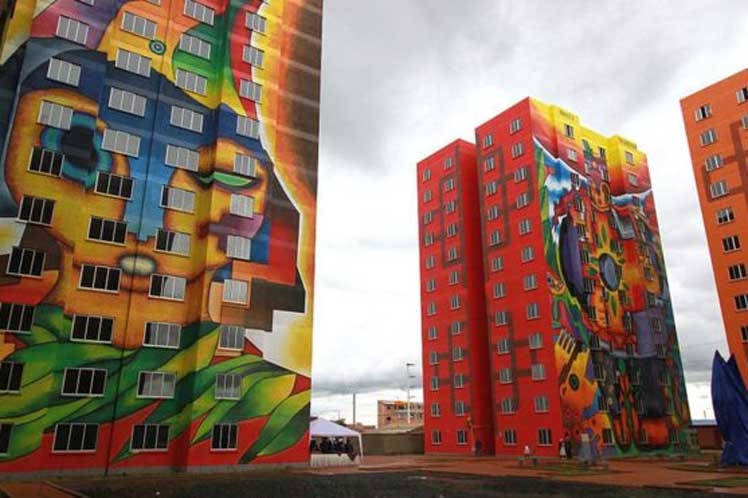Economy grows, poverty decreases in Bolivia with Evo Morales
By Jorge Petinaud La Paz, Oct 4
The process of change headed by Bolivia's president, Evo Morales, today exhibits a privileged growth of the economy, while the poverty indicator declined significantly, according to experts.
When one analyzes the long term in Bolivia, it has maintained a growth well above the regional average; it had a process of poverty reduction of very important magnitudes, said the president of the Development Bank of Latin America (CAF), Luis Carranza.
During a public ceremony held Thursday in this capital city, Carranza said very few economies in the world significantly reduced their poverty rates in a period as short as the Plurinational State.
Sixteen days before the general elections in which Morales aspires to re-election, the South American country maintains these positive indicators and leads macroeconomic stability in the region, despite the international crisis of raw material prices.
'Bolivia was affected,' said the expert, 'but it is better supporting (the international crisis) because of the intrinsic strengths of the Bolivian economy.'
Neoliberal governments left the country with a poverty rate of 38.2 percent in 2005, and in 2018 this indicator dropped to less than half (15.2 percentage points).
Another success of the economic, social, community and productive model established by the ruling Movement to Socialism, was the passage in the last six years of over three million people to middle class status.
In this context, specialized agencies such as the Economic Commission for Latin America and the Caribbean (ECLAC) and even the neoliberal International Monetary Fund (IMF) estimate that the country will grow by around 3.5 percent in 2019, while the Ministry of Economy and Public Finance places that figure in four units over 100.
CORRECT OR MIRACLE POLICY?
Experts of the Latin American Strategic Center for Geopolitics (Celag) Alfredo Serrano and Guillermo Oglietti affirm in an article published in the Mexican newspaper La Jornada, that such success is largely due to the de-dollarization of the economy.
Among other measures, they remember that the Morales government received an exchange rate of eight pesos per dollar, and in a short time 'appreciated' the national currency (Bolivian) to seven for each US currency. It is currently stable (quoted at 6.95).
In this way, a loss was generated for dollar holders, which broke the inertia and the message was issued that the bet on the greenback does not always win.
Simultaneously, the purchase and sale of currencies was discouraged with an increase in the exchange rate differential of 10 cents and the liquid reserve requirements of banks for each dollar deposit were increased to 66.5 percent, they add.
According to Celag experts, the reserve requirement for deposits in Bolivians, on the other hand, is only 11 percent, and this increases the cost of dollar credits.
Serrano and Oglietti point out that higher rates were also offered to savers in national currency, which increased the preference for this monetary unit.
Celag scholars also consider important the decision of the government of President Morales to issue public bonds in national currency while those encoded in dollars disappeared.
These and other measures that characterize the strategy of the economic, social, community and productive model of the process of change in Bolivia make its economy the fastest growing in South America in the last five years in a row.

